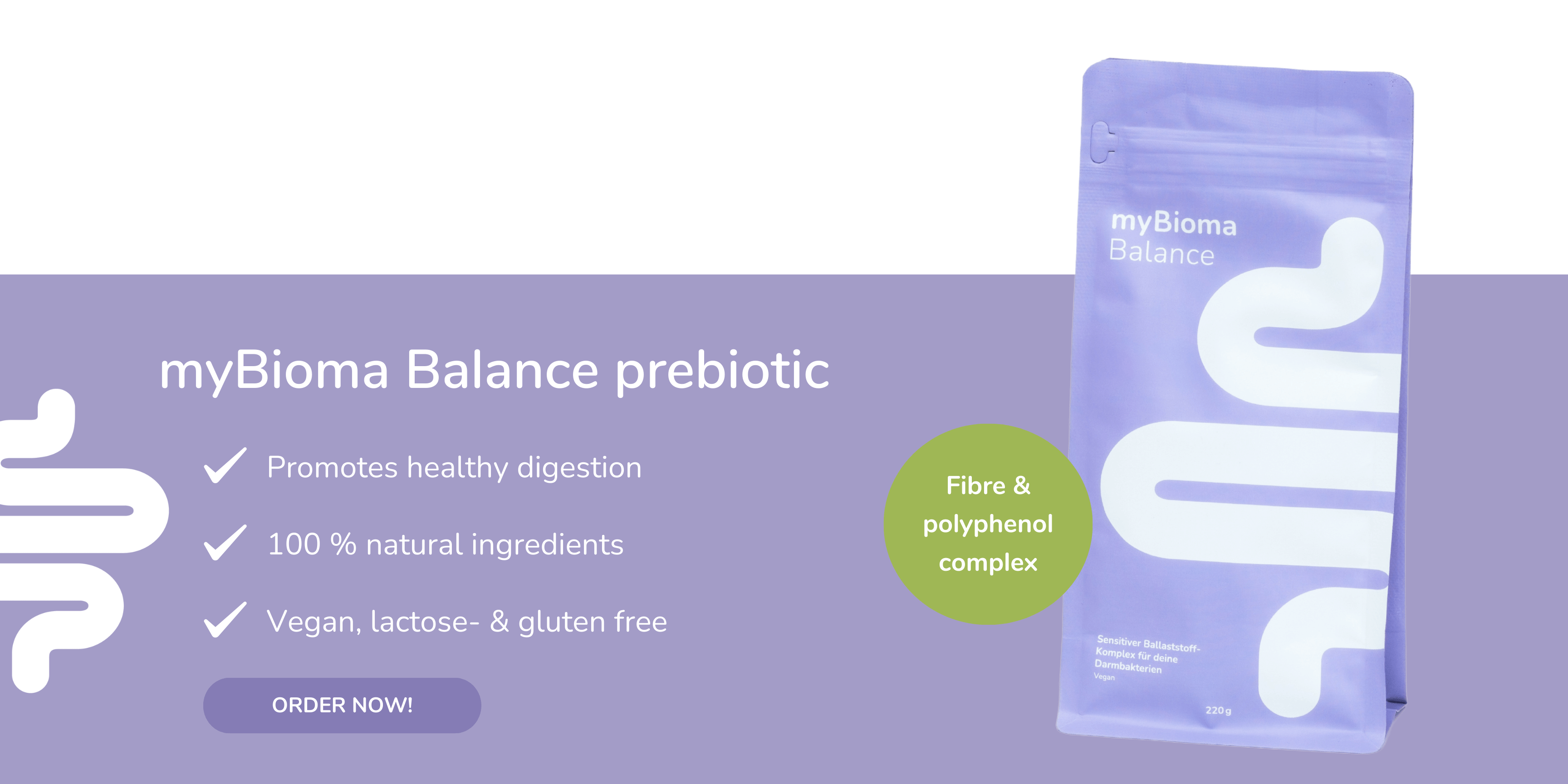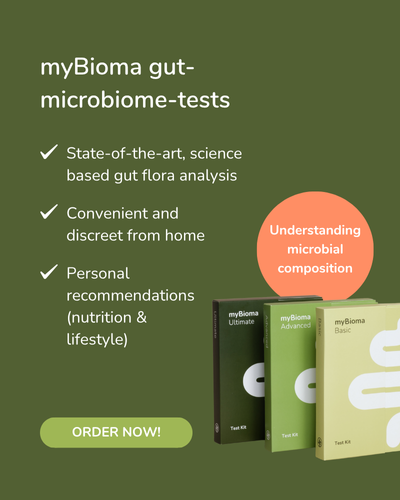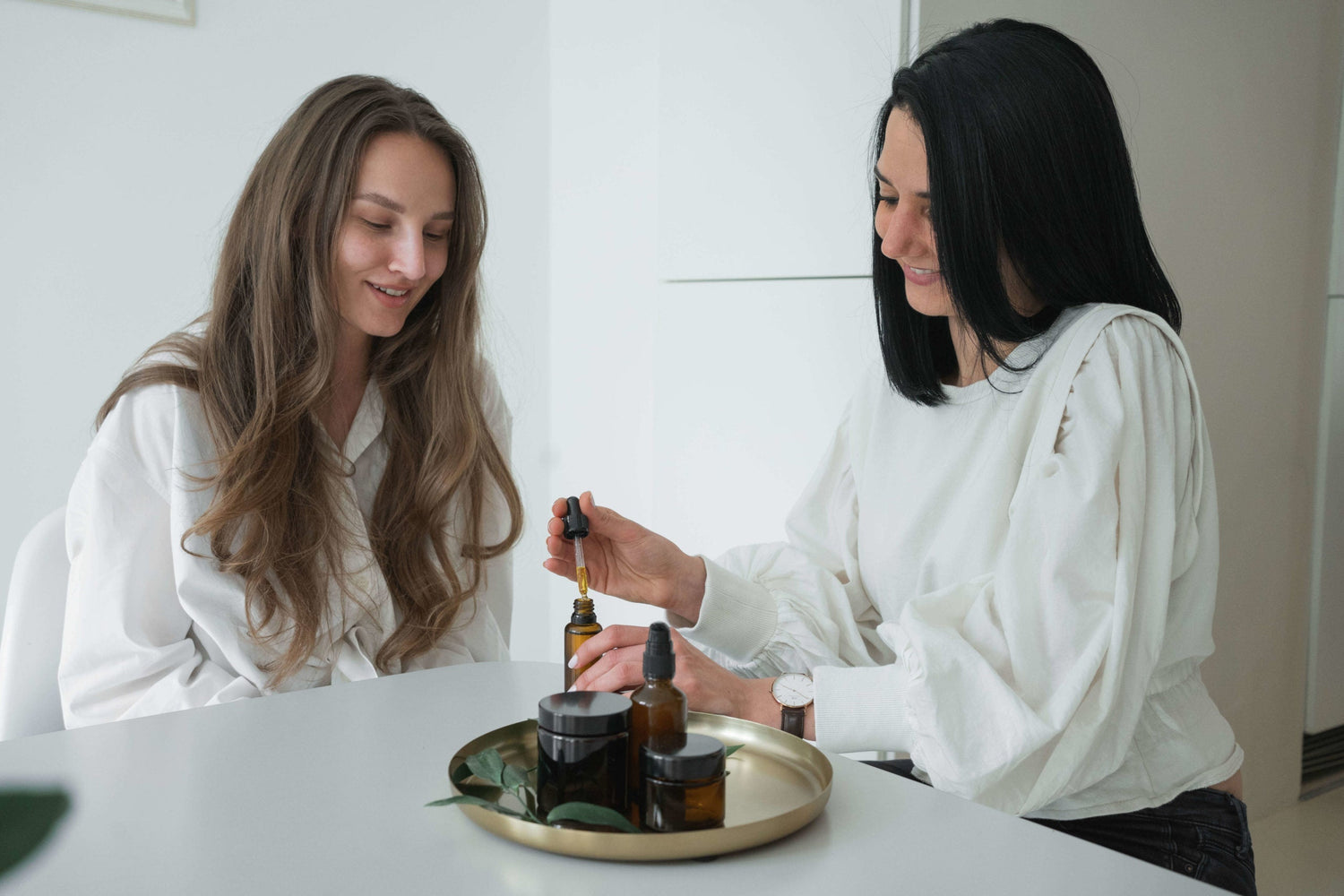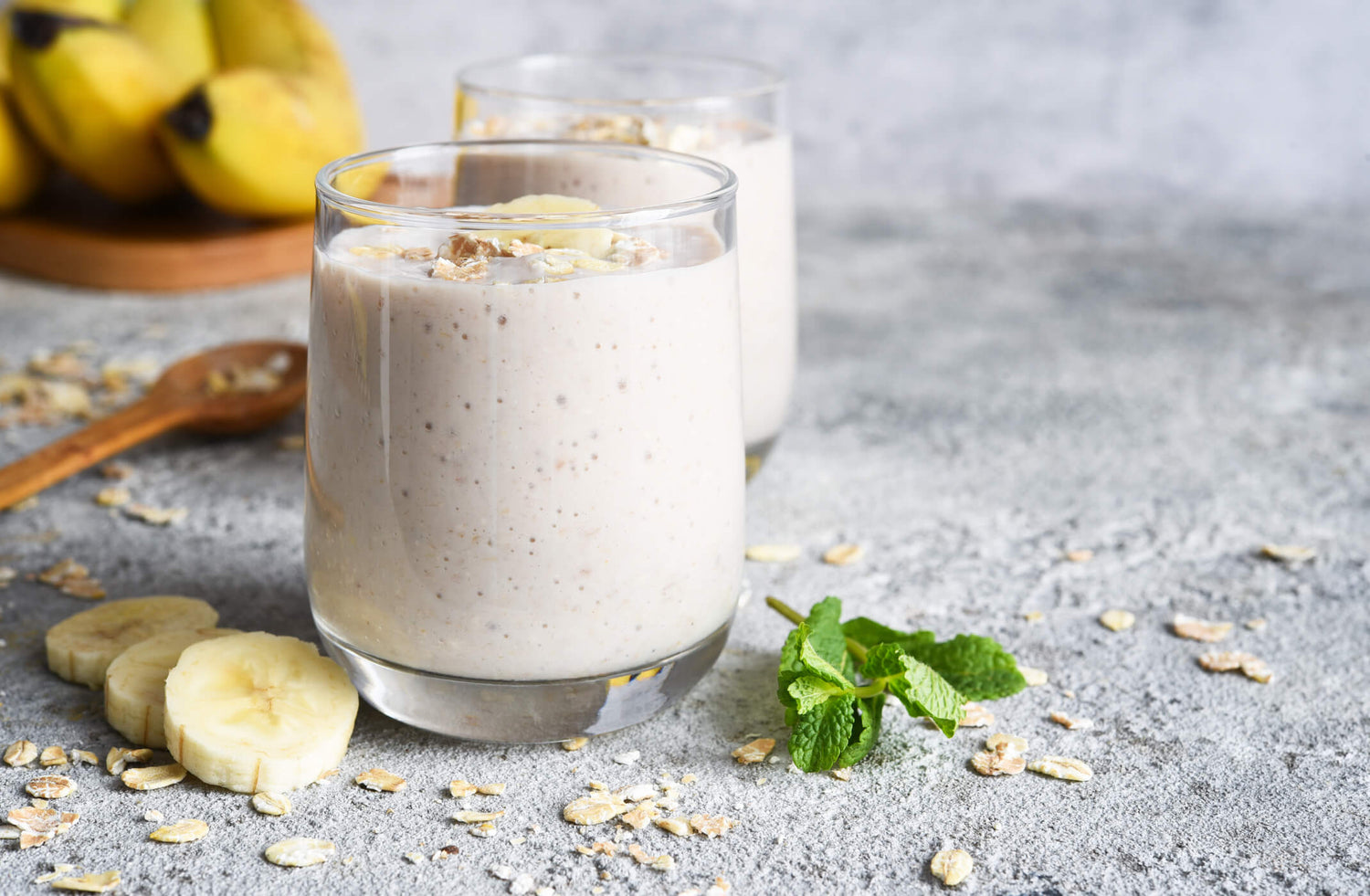The gut-skin axis
Our gut microbiome is involved in many important physiological processes. The connection of the gut microbiome to different organs in the body is described by axes. Thus, there is also a gut-skin axis that connects the microbiome and the skin via the gut barrier, inflammatory mediators, and metabolites (1). For the skin to perform its functions such as protection, temperature regulation, and water retention, it is important that it be in balance. The skin goes through a renewal process to maintain the maintenance of this balance. The top skin cells (epidermal cells) originate from stem cells in the basal layer and as they migrate to the surface of the skin, they change their appearance. The cells develop by passing through three stages of cell types – basal cell, stinging cells, and granule cells before becoming the cells that form the outermost layer of the skin. The microbiome influences the signaling pathways of this important skin renewal process (2).
How bacteria influence our skin
A disturbed intestinal barrier, inflammatory mediators and metabolites released by microorganisms influence inflammatory skin diseases such as rosacea, psoriasis, atopic dermatitis, and acne. This is also why the balance of our gut microbiome is so important. Diet, lifestyle, and genetic predisposition are important regulators of gut microbial balance. Metabolites such as short-chain fatty acids (SCFA), which are produced by the fermentation of dietary fiber in the gut, affect the prevalence of certain bacteria on the skin (2). This in turn affects the immune defense mechanisms of the skin. For example, if the bacteria that produce propionate and butyrate are reduced in the intestine, this can trigger a proinflammatory state of the intestine and compromise the integrity of the intestinal barrier (3).
Through its immunoregulatory function, the gut microbiome ensures protection against potential pathogens. It also triggers immune-protective responses that enable immune tolerance to environmental and dietary antigens. Thus, an imbalance in the composition of the gut microbiome, known as dysbiosis, affects skin health. Also, the skin microbiome itself is critical in immune regulation. Microbial products such as lipoteichoic acid from staphylococci have an anti-inflammatory effect. The skin microbiome provides direct protection against pathogens in the skin (3). For this reason, it is important that the gut and skin work together for optimal skin health.
Common diseases of the skin at a glance
Psoriasis (Psoriasis)
Psoriasis is a systemic autoimmune disease in which immune-mediating metabolic pathways are extremely active and immune cells attack the patient’s own skin cells. Irritable bowel syndrome is often a concomitant disease in psoriasis. Often, certain bacteria such as Bacteroidetes, Proteobacteria, Actinobacteria, and Akkermansia muciniphila are decreased (4).
Atopic dermatitis (Eczema)
Atopic dermatitis is a disease characterized by a disrupted skin barrier, altered immune response, and altered skin microbiome. Studies show an association with increased occurrences of the bacterium Faecalibacterium prausnitzii in the gut, as well as reduced levels of the short-chain fatty acids butyrate and propionate (5). The bacterial species Akkermansia, Bacteroidetes, and Bifidobacterium may also be reduced (6).
Acne vulgaris (Acne)
Acne is an inflammatory disease of the sebaceous gland hair follicles. It results in excessive sebaceous secretion, desquamation of horn-forming cells (keratinocytes) in the uppermost layer of the skin, and promotion of inflammation by the bacterium Propionibacterium acnes on the skin (7). In one study, acne patients were shown to have a lower diversity of the gut microbiome, an increased abundance of the bacterial species Firmicutes, and a reduced abundance of Bacteroidetes (8).
Rosacea
Rosacea is characterized by redness, dilated veins, or vesicles. The reason is an interaction of genetic factors, a dysregulation of the immune system and a dysbiosis of the skin microbiome (9). There is also evidence that Rosacea is associated with a disturbed balance in the gut microbiome. Helicobacter pylori infection and the intestinal disease SIBO (small intestine bacterial overgrowth) are associated with Rosacea (10).
Help for the skin
As you can see, the health of the skin is closely related to the interaction between the gut and the skin. The most important key to promoting a healthy gut microbiome and beautiful skin is a balanced diet. High fiber foods like whole grains, vegetables and legumes support the growth of beneficial gut bacteria. The influence of stress is also a major factor affecting gut and skin health. Therefore, it is important to find tools that help you cope with stress. In addition, certain pro- and prebiotics, also directly from fermented foods, can help to support your gut and skin health. Also, make sure you have a gentle skin care routine that works for your skin type and protects the skin barrier.
References
- A. Y. K. Thye et al., “Gut–Skin Axis: Unravelling the Connection between the Gut Microbiome and Psoriasis,” Biomedicines, vol. 10, no. 5. MDPI, May 01, 2022. doi: 10.3390/biomedicines10051037.
- I. Salem, A. Ramser, N. Isham, and M. A. Ghannoum, “The gut microbiome as a major regulator of the gut-skin axis,” Frontiers in Microbiology, vol. 9, no. JUL. Frontiers Media S.A., Jul. 10, 2018. doi: 10.3389/fmicb.2018.01459.
- C. A. O’Neill, G. Monteleone, J. T. McLaughlin, and R. Paus, “The gut-skin axis in health and disease: A paradigm with therapeutic implications,” BioEssays, vol. 38, no. 11, pp. 1167–1176, Nov. 2016, doi: 10.1002/bies.201600008.
- B. De Pessemier, L. Grine, M. Debaere, A. Maes, B. Paetzold, and C. Callewaert, “Gut–skin axis: Current knowledge of the interrelationship between microbial dysbiosis and skin conditions,” Microorganisms, vol. 9, no. 2. MDPI AG, pp. 1–33, Feb. 01, 2021. doi: 10.3390/microorganisms9020353.
- H. Song, Y. Yoo, J. Hwang, Y. C. Na, and H. S. Kim, “Faecalibacterium prausnitzii subspecies-level dysbiosis in the human gut microbiome underlying atopic dermatitis,” Journal of Allergy and Clinical Immunology, vol. 137, no. 3, pp. 852–860, Mar. 2016, doi: 10.1016/j.jaci.2015.08.021.
- S. Watanabe et al., “Differences in fecal microflora between patients with atopic dermatitis and healthy control subjects,” Journal of Allergy and Clinical Immunology, vol. 111, no. 3, pp. 587–591, Mar. 2003, doi: 10.1067/mai.2003.105.
- Hywel C Williams, Robert P Dellavalle, and Sarah Garner, “Acne vulgaris,” The Lancet , vol. 379, no. 9813, pp. 361–372, Aug. 2011.
- Y. Deng, H. Wang, J. Zhou, Y. Mou, G. Wang, and X. Xiong, “Patients with acne vulgaris have a distinct gut microbiota in comparison with healthy controls,” Acta Derm Venereol, vol. 98, no. 8, pp. 783–790, 2018, doi: 10.2340/00015555-2968.
- A. Sharma et al., “Rosacea management: A comprehensive review,” Journal of Cosmetic Dermatology, vol. 21, no. 5. John Wiley and Sons Inc, pp. 1895–1904, May 01, 2022. doi: 10.1111/jocd.14816.
- A. Egeberg, L.B. Weinstock, E.P. Thyssen, G.H. Gislason, and J.P. Thyssen, “Rosacea and gastrointestinal disorders: a population‐based cohort study ,” British Journal of Dermatology, vol. 176, no. 1, pp. 100–106, Jan. 2017.









